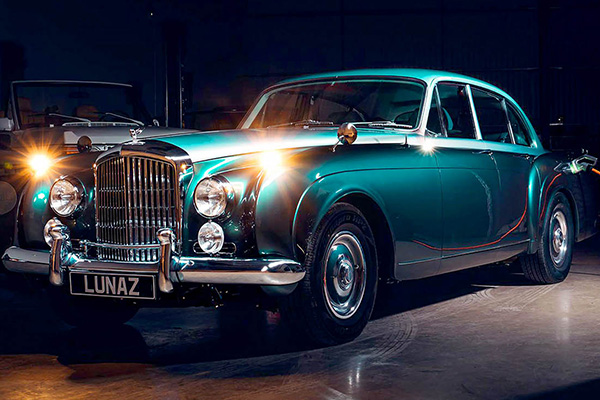21 February 2025
The race to decarbonise transport is frantic, both in the UK and internationally. The sector is a major contributor to global emissions, and electric vehicles are increasingly seen as the way to reduce the impact of vehicles on the environment.
There are arguments for and against this electrification push, but it does put the question of classic and vintage vehicles into the spotlight. How can we, as climate conscious drivers, continue to run classics in all good conscience? As is so often the way, the reality is far less black and white, and much more sensible.
Electrifying classics

Some owners – as is their right, regardless of others’ opinions – are looking to electrify their classic cars. By transplanting an electric powertrain, comprising drive battery and electric motor, they are reducing the carbon emissions of their classic vehicle each mile it is driven.
The simple fact of the matter is that there is no fuel burnt at the point of use, and even if the car is charged from the UK grid – which included carbon-fuelled electricity generation – it is greener than running a car on petrol or diesel per mile. And of course, many electric vehicle drivers go on to a green tariff or use home-generated electricity to further off-set emissions.
The biggest issue here is that the carbon cost of the battery is relatively large. In fact, a new electric vehicle is only ‘greener’ than an internal combustion engine model after around 33,000 miles (at time of publication, based on average emissions and average UK CO2 electricity generation mix) such is its ‘carbon debt’ when rolling out of the factory doors. This isn’t too long a distance, considering most modern cars will comfortably cover more than 100,000 miles in its lifetime, and often double that with a little care.
So electrifying a classic will help matters, but it’s no silver bullet. And there are other considerations such as originality, ‘character’, the ability to reverse the process… so it’s not a simple decision.
Is electrification really needed?
Again, ignoring personal preference, there is a strong case for the argument that classics don’t ‘need’ decarbonising. Research shows that the average distance driven by classic cars is fewer than 700 miles.
This puts annual CO2 emissions – for a typical 25mpg model – at less than 300kg per annum. A modern family car will account for around 770kg per annum, when accounting for fuel usage; that figure more than doubles when factoring in CO2 costs in manufacturing.
Use, repair, and reuse

With a classic car’s manufacturing emissions lost into the climate long ago, it’s not fair to discount them completely, but it is certainly fair to spread them out over a vehicle’s lifetime. We know that a 40 year old car has been running for 40 years – but a modern car is both unproven over that timeframe, and also often considered a more disposable commodity. Not all cars certainly, but many are more complicated to repair than older models, and therefore less likely to survive more than two decades, let alone twice that.
What else can be done?
Of course, it’s no good just saying that there’s no point in trying to decarbonise. So there are certain things that can be done. The main is using lower carbon fuels, which are available from a variety of suppliers, which produce and sell ‘green fuel’ or ‘e-fuel’. These still burn and work in classic engines, but are typically produced from food/crop waste.
With fuels such as SUSTAIN Classic, prices are higher than conventional petrol, but can reduce carbon emissions by around two-thirds.

So essentially, running a classic is good for the environment. That’s slightly tongue in cheek, but there is certainly evidence that proves running a classic car is not the environmental catastrophe some may think it would be.

COMMENT